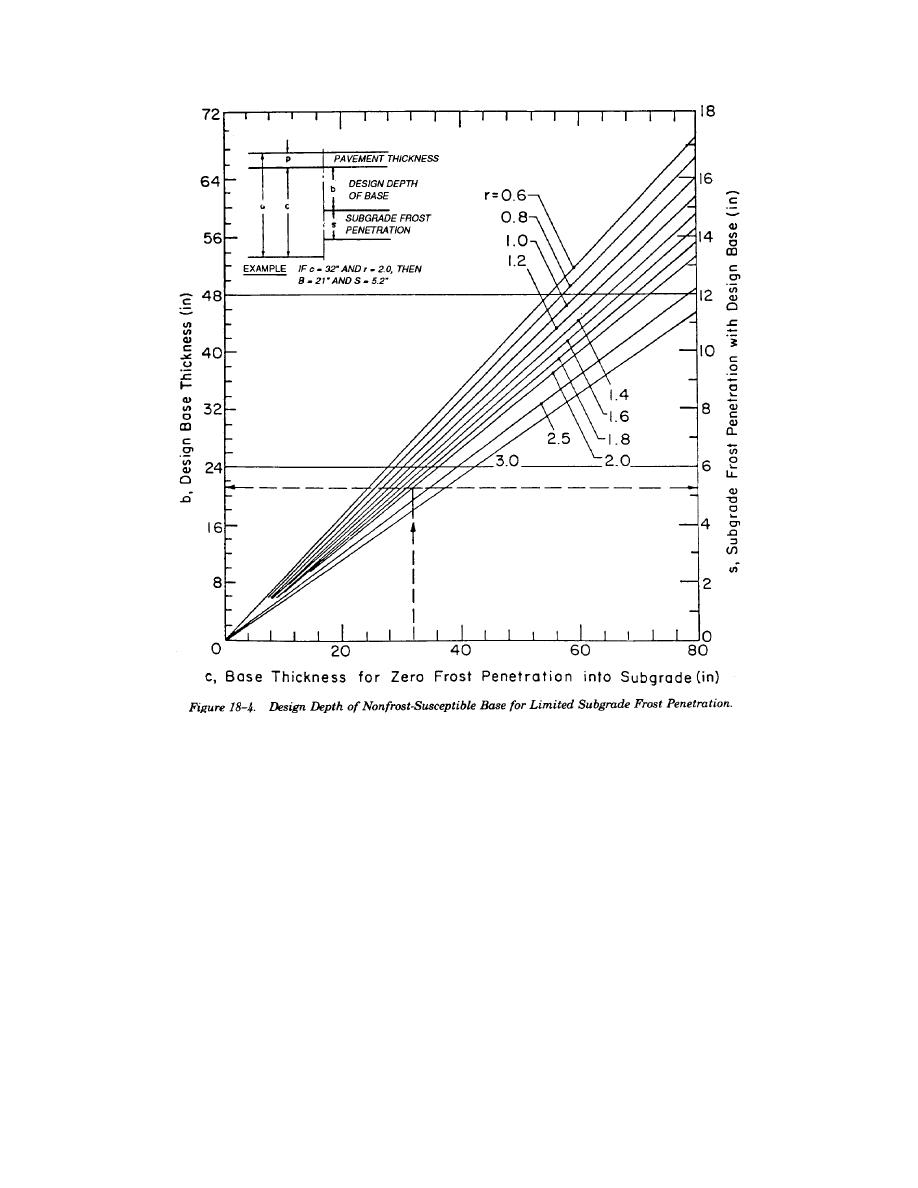
TM 5-822-5/AFM 88-7, Chap. 1
d. Thickness. The above procedure will result in
layer and of any bound base, as well as the CBR
a thickness of material between the frost-susceptible
(California Bearing Ratio) requirements of each
subgrade and the pavement so that for average field
layer of granular unbound base, will be determined
conditions subgrade frost penetration of the amount
using nonfrost criteria. The thickness of rigid
s should not cause excessive differential heave of
pavement slab will also be determined from nonfrost
the pavement surface during the design freezing
criteria.
index year.
e. Controlling thickness. If the combined thick-
18-7. Reduced Subgrade Strength.
ness of pavement and base required by the non-frost
Thickness design may also be based on the season-
criteria exceeds the thickness given by the limited
ally varying subgrade support that includes sharply
subgrade frost penetration procedure of design, the
reduced values during thawing of soils that have
greater thickness given by the nonfrost-criteria will
been affected by frost action. Excepting pavement
be adopted as the design thickness.
projects that are located in regions of low design
f. Effects of nonfrost criteria. The base course
freezing index, this design procedure usually
composition requirements of this chapter should be
requires less thickness of pavement and base than
rigorously followed. The design base thickness is
that needed for limited subgrade frost penetration.
the total thickness of filter layers, granular unbound
The method may be used for both flexible and rigid
base and subbase, and any bound base. For flexible
pavements wherever the subgrade is reasonably
pavements, the thickness of the asphalt surfacing
uniform or can be made reasonably horizontally
18-13



 Previous Page
Previous Page
